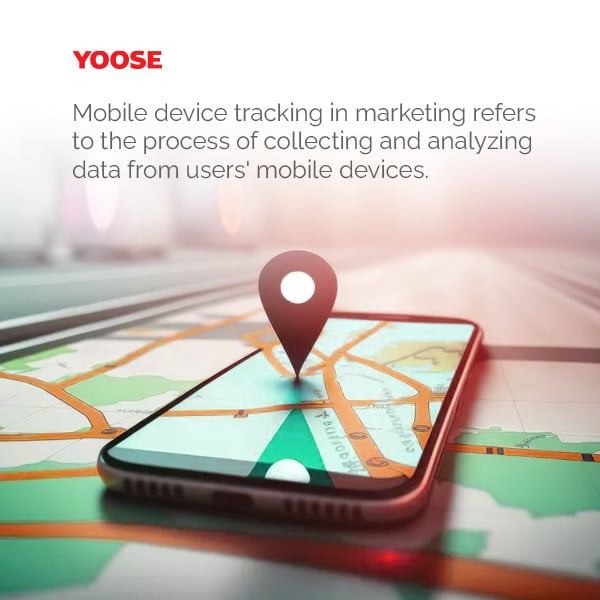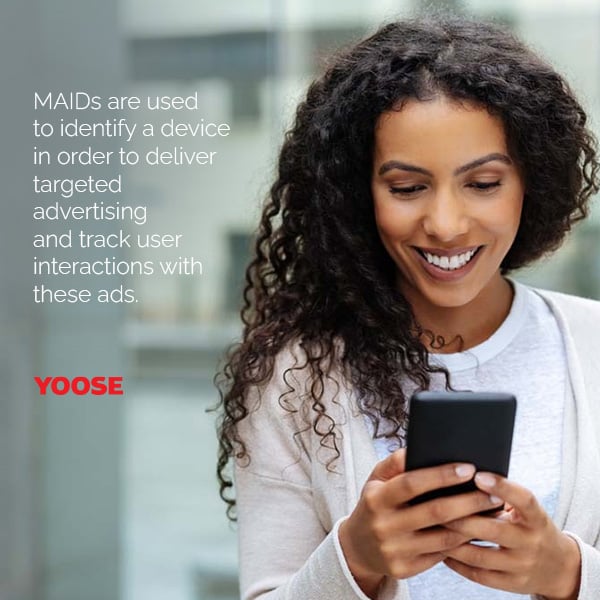Mastering Mobile Device Tracking: A Practical Guide to Boosting Your Digital Marketing
Mobile device tracking is a powerful technique that allows marketers to collect and analyze data from users’ mobile devices. It can help marketers improve their marketing strategies, personalize their content, and enhance their user experiences. In this article, you will learn about the different types of mobile device tracking, such as geo-targeting, cookies, device ID tracking, app analytics, cross-device tracking, and mobile ad IDs. You will also learn about the benefits and challenges of mobile device tracking, as well as the privacy concerns and regulations that affect it. Finally, you will discover some of the popular platforms and tools that can help you implement mobile device tracking in your digital marketing efforts.
What is Mobile Device Tracking in Marketing?
Mobile device tracking in marketing refers to the process of collecting and analyzing data from users' mobile devices. It includes tracking user behaviors, preferences, locations, and interactions with ads or content. This data is used to improve marketing strategies, personalize content, and enhance user experiences.

Type overview of mobile device tracking technology
- Geo-Targeting and Geo-Fencing: This allows marketers to send tailored messages or ads to users based on their geographical location. Geo-fencing goes a step further by defining a virtual boundary around a physical location. When a device enters or leaves this area, it triggers an action (like sending a notification).
- Cookies and Pixels: Cookies are small data files stored on a user's device, and pixels are code snippets placed on a website. They help in tracking user behavior, like which pages they visited, how long they stayed, and what actions they performed.
- Device ID Tracking: Every mobile device has a unique ID. Tracking this ID allows marketers to understand user behavior across different apps and websites. It's an effective way to measure ad performance, frequency capping (limiting the number of times a specific ad is shown to a user), and re-targeting.
- App Analytics: These tools track user behavior within an app. They can provide insights into how often the app is used, what features are popular, and where users are dropping off. This information is useful for improving the app and tailoring marketing messages.
- Cross-Device Tracking: This method tracks user behavior across multiple devices, like a smartphone, tablet, and desktop. It provides a more holistic view of a customer's journey and helps in delivering a consistent marketing message across all platforms.
- Mobile Ad IDs (MAIDs): These are unique identifiers for mobile devices and are used for targeted advertising. They are an effective way to track user behavior and preferences.
MAID and its important

MAID stands for Mobile Advertising Identifier. It's a unique string of characters assigned to a mobile device, like a smartphone or a tablet. MAIDs are used to identify a device in order to deliver targeted advertising and track user interactions with these ads. Here are some key points about MAIDs:
- Privacy and User Control: Unlike some other identifiers, such as IMEI numbers or MAC addresses, MAIDs are designed to respect user privacy. Users can typically reset their MAID whenever they want, effectively making themselves appear as a new user to advertisers. On iOS devices, this is called the Identifier for Advertisers (IDFA), and on Android devices, it's called the Google Advertising ID (GAID).
- Targeted Advertising: MAIDs are used to deliver personalized ads based on a user's past behavior. For example, if a user has shown an interest in fitness apps, they may see more ads for fitness-related products or services.
- Ad Tracking and Attribution: MAIDs allow advertisers to track which ads a user has seen and interacted with. This is essential for understanding the effectiveness of different ad campaigns. In addition, MAIDs can be used for attribution, which means determining which ad or marketing touchpoint led to a conversion, like an app install or a purchase.
- Lookalike Audience Modeling: By analyzing the behavior of users who respond positively to an ad, marketers can create "lookalike" audiences—groups of users who are similar to those who have converted. MAIDs are used in the process of building these lookalike audiences.
- Limitations and Changes: It's important to note that the use of MAIDs for advertising is subject to change due to evolving privacy norms and regulations. For instance, Apple introduced App Tracking Transparency (ATT) in iOS 14.5 (in 2021), which requires apps to get user permission before tracking their data across apps or websites owned by other companies. This effectively means that apps need to ask for permission to use the IDFA.
What is Cross-Device Tracking and Why is it Useful?
Cross-device tracking refers to the ability to track a user's behavior across multiple devices, such as a smartphone, tablet, and desktop. It provides a more holistic view of a user's journey, helping marketers to understand their audience better and deliver a consistent marketing message across all platforms. This can lead to improved user experiences and higher conversion rates.
The Importance of Cross-Device Tracking
- Holistic View of the Customer Journey: Cross-device tracking allows marketers to understand the complete customer journey. A user might discover a product on their smartphone, research it on a laptop, and finally make a purchase on a tablet. Understanding this journey enables marketers to optimize each touchpoint effectively.
- Improved Personalization and User Experience: By understanding how users interact with their brand across different devices, marketers can personalize user experiences based on the device being used. For instance, they might optimize mobile experiences for discovery and research, while focusing on facilitating easy purchases on desktop interfaces.
- Effective Ad Spend: Cross-device tracking helps marketers understand which devices contribute most to conversions, enabling them to allocate their ad spend more effectively. They can invest more in advertising on devices that are more likely to lead to conversions.
- Consistent Marketing and Retargeting: With cross-device tracking, marketers can ensure that their messaging is consistent across all devices. It also enables effective retargeting, as marketers can reach users on different devices based on their past interactions.
Challenges with Cross-Device Tracking

Despite its benefits, cross-device tracking has its challenges:
- Privacy Concerns: Cross-device tracking involves collecting a large amount of personal data, raising privacy concerns. Marketers must comply with privacy laws and regulations, which often require user consent for data collection.
- Device Identification: Identifying and linking the same user across different devices can be challenging. While techniques like deterministic tracking (using logged-in data) and probabilistic tracking (using data points like location, IP address, and device type) can help, they are not always 100% accurate.
- Fragmented User Journeys: The customer journey can be non-linear and fragmented across devices, making it hard to create a cohesive picture of user behavior.
Popular platform of mobile device tracking in marketing
- AppsFlyer: AppsFlyer is a mobile measurement platform that helps marketers track and measure the effectiveness of their mobile marketing campaigns. AppsFlyer offers a variety of features, including attribution, user segmentation, and fraud detection.
- Adjust: Adjust is another popular mobile measurement platform that offers a variety of features, including attribution, user segmentation, and fraud detection. Adjust also offers a variety of integrations with other marketing platforms.
- Kochava: Kochava is a mobile measurement platform that focuses on data privacy and security. Kochava offers a variety of features, including attribution, user segmentation, and fraud detection.
- Flurry: Flurry is a mobile analytics platform that offers a variety of features, including app analytics, user segmentation, and crash reporting.
- Localytics: Localytics is a mobile analytics platform that offers a variety of features, including app analytics, user segmentation, and push notifications.

Privacy concerns

Mobile device tracking is a powerful tool for marketers, but it also raises privacy concerns. Here are some of the privacy regulations that marketers need to be aware of when using mobile device tracking:
- The General Data Protection Regulation (GDPR): The GDPR is a European Union regulation that gives individuals more control over their personal data. The GDPR requires businesses to obtain consent before collecting or using personal data, and it also gives individuals the right to access, correct, or delete their personal data.
- The California Consumer Privacy Act (CCPA): The CCPA is a California law that gives consumers more control over their personal data. The CCPA requires businesses to disclose the categories of personal data they collect, the purposes for which they collect personal data, and the third parties with whom they share personal data. The CCPA also gives consumers the right to opt out of the sale of their personal data.
- The Children's Online Privacy Protection Act (COPPA): COPPA is a United States law that protects the privacy of children under the age of 13. COPPA requires businesses to obtain parental consent before collecting or using personal information from children under the age of 13.
- These are just a few of the privacy regulations that marketers need to be aware of when using mobile device tracking. It is important to stay up-to-date on the latest regulations and to comply with all applicable laws.
- In addition to the above regulations, there are a number of other things that marketers can do to protect the privacy of their users. These include:
- Obtaining consent: Marketers should obtain consent from users before collecting or using their personal data. Consent should be clear, unambiguous, and freely given.
- Providing transparency: Marketers should be transparent about how they collect, use, and share personal data. They should provide users with a clear and concise privacy policy that explains their data collection and use practices.
- Giving users control: Marketers should give users control over their personal data. Users should be able to access, correct, or delete their personal data at any time.
- Protecting data: Marketers should take steps to protect the security of personal data. They should use appropriate security measures to prevent unauthorized access, use, disclosure, or destruction of personal data.
By following these guidelines, marketers can help to protect the privacy of their users and comply with applicable laws.
Relationship between MAIDs and Location Based Marketing
Mobile Advertising Identifiers (MAIDs) and location-based marketing are closely related. Here's how they connect:
Location-based Marketing: This is a direct marketing strategy that uses a mobile device's geographical location to alert the device's owner about an offering from a near-by business. Techniques used in location-based marketing include geo-targeting, geo-fencing, and beaconing.
- MAIDs: As previously explained, a MAID is a unique identifier assigned to a mobile device. Advertisers use MAIDs to track user behavior, deliver personalized ads, and measure the effectiveness of their campaigns.
- Now, the relationship between MAIDs and location-based marketing comes into play in the following ways:
- Personalized Advertising: By combining location data with the behavioral data associated with a MAID, advertisers can deliver highly personalized ads. For instance, a user who frequently visits fitness-related locations (like gyms or sports stores) and has shown an interest in fitness apps could be targeted with relevant ads.
- Improved Campaign Measurement: MAIDs allow marketers to measure the effectiveness of their location-based campaigns. They can track which ads a user has seen and interacted with and tie this information back to specific locations.
- Attribution: Combining MAIDs with location data can also help with attribution. For example, if a user sees an ad for a store when they are nearby, and then visits the store, the MAID can be used to link the ad exposure and the store visit.
Better Audience Segmentation: Using location data and MAIDs, advertisers can segment their audience more effectively. For example, they can target users who frequently visit certain types of locations.
Enhanced User Experiences: By understanding a user's location and behavior (through their MAID), marketers can create more relevant and engaging user experiences. This might include sending location-specific notifications or offering localized content.
How to measure
Mobile device tracking can provide a wealth of data for digital marketers. Here's how you can measure the effectiveness of mobile device tracking in your digital marketing efforts:

- Conversion Tracking: One of the most direct ways to measure the effectiveness of mobile device tracking is to track conversions. This could be anything from making a purchase, signing up for a newsletter, downloading an app, or any other action that you want your users to take.
- Engagement Metrics: Mobile device tracking allows you to see how users are interacting with your content. You can measure things like click-through rates (CTR), time spent on your site or app, pages per session, bounce rate, and more.
- Location-Based Metrics: If you're using location-based marketing, you can measure the success of these efforts by tracking metrics like foot traffic (for physical locations), conversion rates for location-specific promotions, and the effectiveness of your geo-targeting or geo-fencing efforts.
- Ad Performance: Mobile device tracking can give you insights into how your ads are performing. You can track metrics like viewability (how often your ads are actually seen), conversion rates, cost per click (CPC), cost per acquisition (CPA), return on ad spend (ROAS), and more.
- Cross-Device Tracking: By tracking users across multiple devices, you can gain insights into how users interact with your brand on different platforms. You can measure things like conversion paths (the sequence of interactions that lead to a conversion), device overlap (how many users use more than one device), and cross-device conversions (conversions that start on one device and finish on another).
- Retention and Churn: For apps, retention (how many users continue to use your app over time) and churn (how many users stop using your app) are crucial metrics that can be tracked through mobile device tracking.
- A/B Testing: Mobile device tracking allows you to test different versions of your ads, website, or app to see which performs better. By measuring the outcomes of these tests, you can continuously improve your marketing efforts.
In summary, mobile device tracking plays a crucial role in location-based marketing by not only tracking user behavior but also measuring the effectiveness of ads. If you want to learn more about the technology behind location-based marketing, feel free to contact YOOSE for a complimentary consultation to help improve your business.

